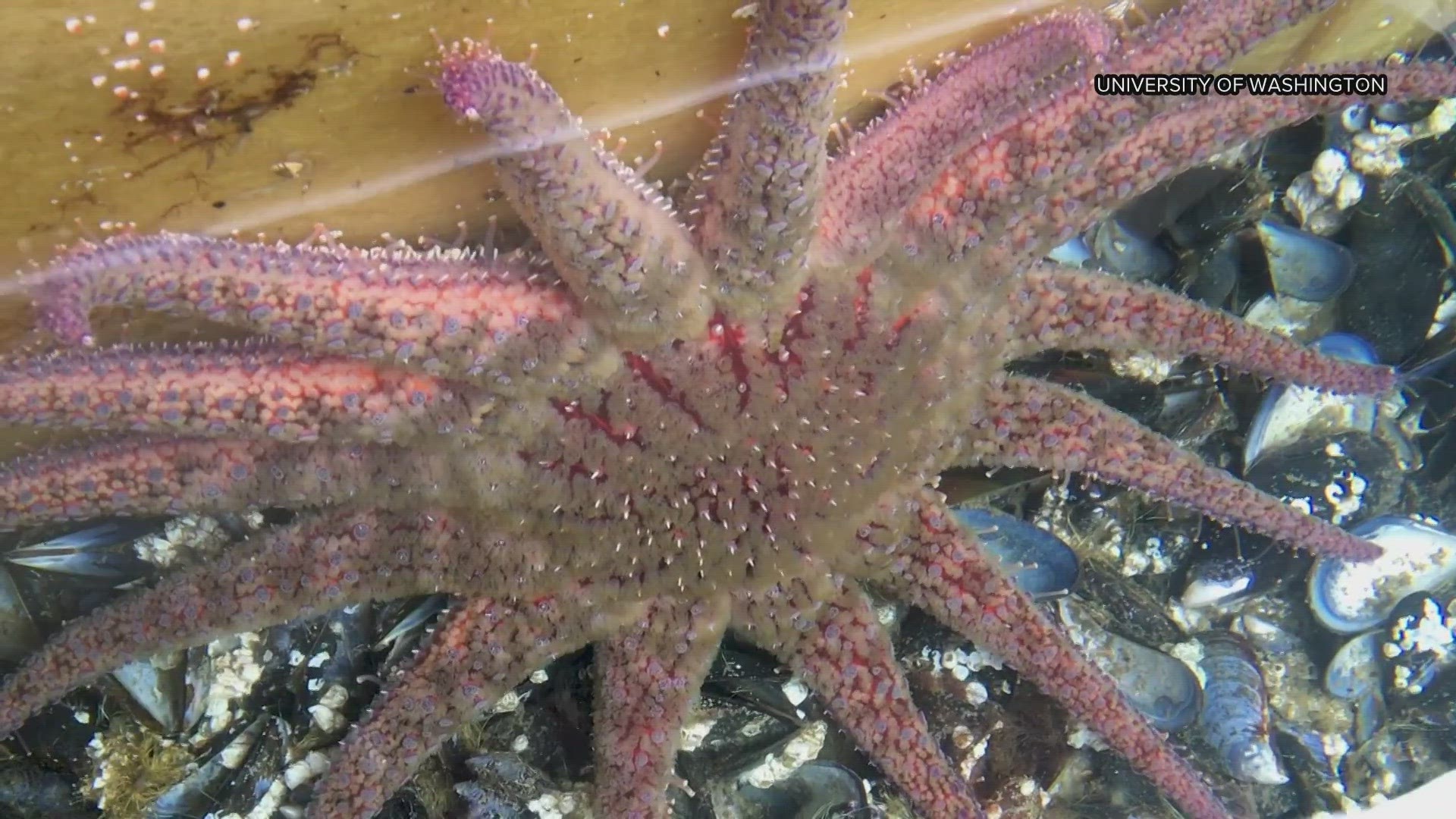WASHINGTON, USA — In Washington state, there are 33 endangered species, according to the U.S. Fish and Wildlife Service, and more than 7,000 around the world.
Now, a starfish that lives along the Washington coast could be added to the list.
The National Oceanic and Atmospheric Administration (NOAA) proposed Wednesday to list the sunflower sea star as "threatened" under the endangered species act.
"It's going to be the first time any starfish or sea star if you want to call it, has been listed under the endangered species act,” said Jason Hodin, a senior research scientist with the University of Washington.
NOAA officials said listing sunflower sea stars as "threatened" under the Endangered Species Act will impact federal actions, decisions on shoreline protections and funding for research that could follow.
In the last decade, what used to be one of the most common species in the world has almost been wiped out. NOAA officials estimate billions, more than 90% of sunflower sea stars, were killed by contracting "Sea Star Wasting Syndrome."
The disease causes sea stars to develop lesions, lose their arms and, within days, disintegrate into gooey masses.
Because of this growing concern, for the past four years, Hodin and his team with the University of Washington have been in Friday Harbor breeding sunflower sea stars in hopes of returning this species back into the wild.
"Learning how they grow, what they need to eat, what kind of conditions they need to grow them in, and how one would do this,” said Hodin.
Hodin said research done by Washington’s Fish and Wildlife Department estimates more than 95 percent of sunflower sea stars have been killed in the state due to the disease. He said there's still a long way to go and hopes listing the species as threatened will bring the necessary changes to keep this species alive.
"What the sunflower star is telling us is we need to take better care of our oceanic ecosystem,” said Hodin. “We can't necessarily do anything about a disease popping up, but we can do something about things like pollution in our environment, other stresses to the ocean."
NOAA officials are asking for public comment before finalizing the proposal in the coming months.

